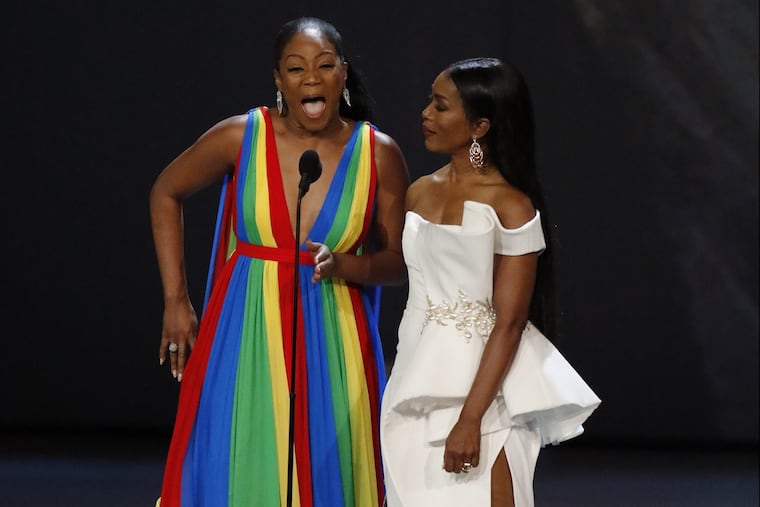When it comes to Angela Bassett and Omarosa mixup, it’s not the first time
New York Times is under fire for publishing a caption that misidentified award-winning actress Angela Bassett as Omarosa Manigault Newman, the fired Trump administration aide.

The New York Times was catching plenty of flak Tuesday on Twitter and beyond for running a photo showing Angela Bassett, a Golden Globe winner and Academy Award-nominated actress, identified as the former White House aide Omarosa Manigault Newman at the Emmys Monday night.
The mix-up between the Black Panther star and the exiled Trump aide was first noticed by BuzzFeed reporter Julia Reinstein, who tweeted shortly before 9 a.m. Tuesday.
The error caused some readers to question if the New York Times thought all dark-skinned women looked alike.
The New York Times acknowledged the error in its own tweet, blaming the incorrect caption on a photo wire service, which Yahoo Entertainment named as Getty Images, and saying it would issue a correction.
This wasn't the first time major news organizations misidentified a black woman.
In March, the New York Times ran a photo with a caption identifying a girl as Linda Brown — the daughter of the man who sued to desegregate public schools in the case Brown v. Board of Education. But it wasn't Brown. And news outlets across the world ended up publishing with her obituary a generic photo of a black girl in a plaid coat sitting at a table alone while her white classmates sat apart.
Months later, Alexios Mantzarlis, who leads the International Fact-Checking Network at the Poynter Institute, sent out a tweet that news organizations were still using the wrong photo, even after AP had sent out a notice.
Now, "the photo lives on in websites around the world," he said. "This is a timely reminder that we all have a responsibility to fact-check, at all times."
And just last month, Fox News paid tribute to the late Aretha Franklin by using a photo of Philadelphia's Patti LaBelle.
The latest confusion prompted discussions about the need for more people of color in newsrooms and television stations, as news analyst Zerlina Maxwell pointed out in her tweet.
Karen M. Turner, associate professor of journalism at Temple University, said these mix-ups in the media are rooted in "the difficulty of cross-cultural identification." She referenced studies that show white people have trouble accurately identifying people of color in a police lineup.
"You've heard of that saying, 'All black people look alike.' That's part of it," Turner said.
When she first heard that the Times had misidentified Bassett, Turner's first thought: "There must not be enough variety and diversity in that newsroom. If you have Asian-Americans, African-Americans, Latinos, you have people who are part of those communities of color and so it's almost like a check. We can make distinctions among ourselves more than other people can."
Meanwhile, Bassett took it in stride, sending out a photo of Scandal star Kerry Washington in her own tweet about the matter: